The Morrison formation of the western United States has provided us with some of the most iconic dinosaur genera ever discovered. Even as new larger or more flamboyant species are discovered and described in this current golden age of paleontology the classics continue to endure in the public eye; Allosaurus and Stegosaurus for example, and the sauropods; Brachiosaurus, Brontosaurus, and Diplodocus among others. But then there is Camarasaurus, the most commonly found and well preserved sauropod in the formation. The name is familiar to you readers, sure, but to most it’s as alien a name as Piatnitzkysaurus. Why was Camarasaurus unable to achieve the popularity of its contemporaries? I suspect that it was simply overshadowed. Diplodocus was sleek and elegant, Brachiosaurus a tall hulking beast, and Brontosaurus has a catchy name, the humble Camarasaurus didn’t stand a chance. Large but not exceptionally large, impressive but kind of homely, it comes across as unremarkable amongst its peers and the toy market has long reflected its poor public image.
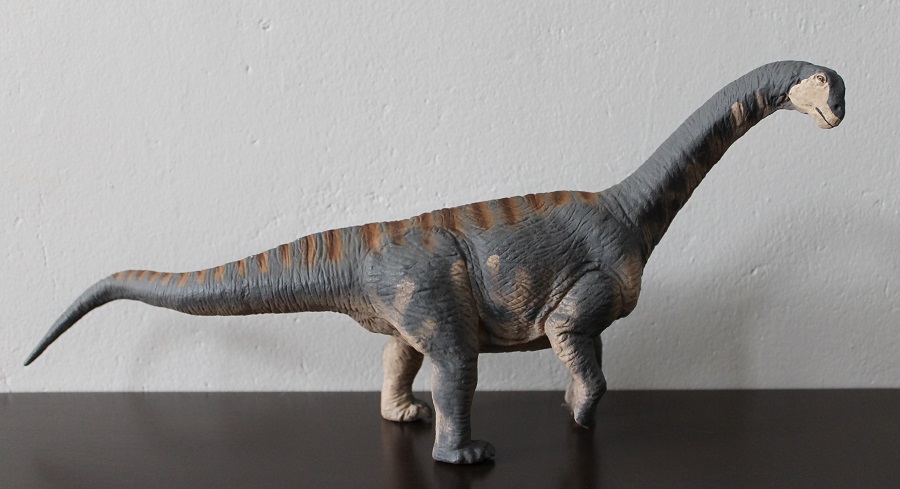
I personally count Camarasaurus among my sauropod favorites. I like its distinctive form that sets it apart from the other sauropods it mingled with. For me and others like me the best and most accessible collectible was the Carnegie Camarasaurus, which is now 18 years old and retired with the rest of the Carnegie line. Thankfully the Carnegie Camarasaurus was and still is a splendid model and having it as the sole representative of this genus was sufficient for a very long time. But as the years pass and science marches on, it has become increasingly dated and hard to find as well.
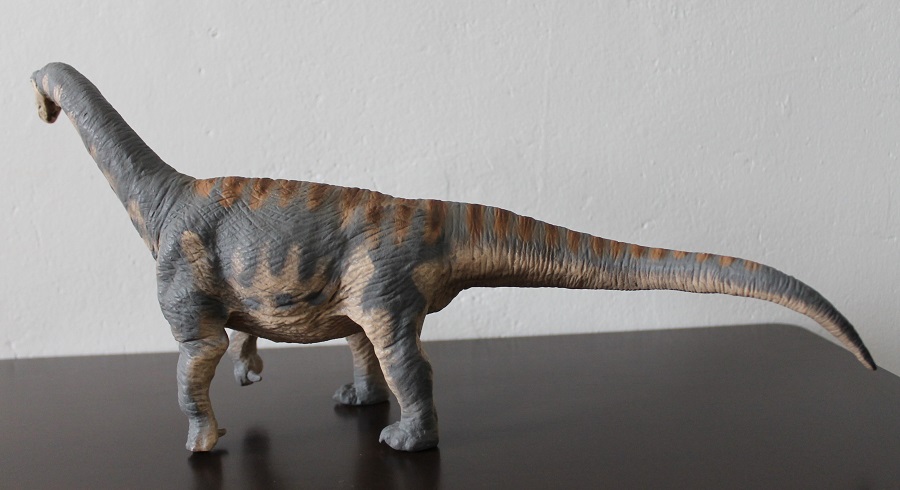
Enter the new and improved Wild Safari. They’re taking it upon themselves to replace the more dated models of the now defunct Carnegie Collection and in doing so have released a Camarasaurus for the modern ages, one that’s sure to replace or share space with it’s Carnegie counterpart on many collector’s shelves.
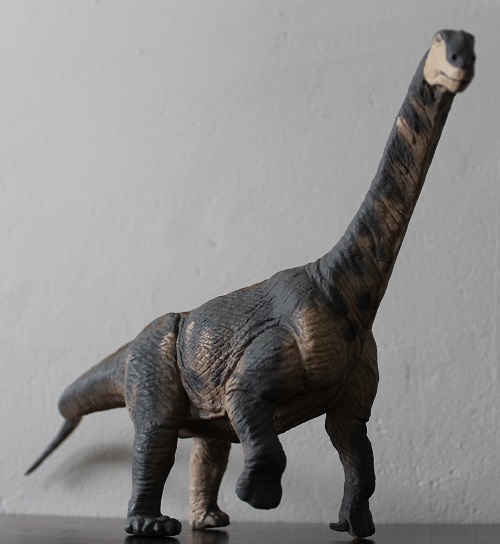
The Safari Camarasaurus measures in at 13.78” long, 2.76” wide and 6.3” tall. According to Doug Watson who sculpted the piece this model represents Camarasaurus lentus specifically. The Carnegie model is 1:40 in scale too, also represents C. lentus, and is roughly the same size. Two other Camarasaurus species existed too, C. grandis and C. supremus. C. lentus was the smallest of the three, reaching about 50’ in length while C. supremus was the largest at 75’. It would of course be great to have 1:40 scale models of the other two species, but I wouldn’t hold my breath.

As should be expected from Mr. Watson by now, this model is thoroughly researched and up to date with the latest scientific knowledge. For example, recent studies on facial anatomy of Camarasaurus thanks to the specimen dubbed “E.T.” appear to have been applied here. Whereas older reconstructions present Camarasaurus with a toothy, almost comical grin, this model hides the teeth completely. The studies suggest that the teeth were mostly obscured by the animal’s thick gums, that only a small portion would have been exposed, and that it’s very likely (though not confirmed) that Camarasaurus had a beak as well. The teeth on this toy are hidden within a closed mouth and although the paint application makes it difficult to see, there is a keratinous beak present as well. Also, the nostrils are placed at the end of the snout, instead of the top of the head as in older reconstructions. This model goes a long way in improving and updating the overall look of what was traditionally reconstructed as an ugly animal.
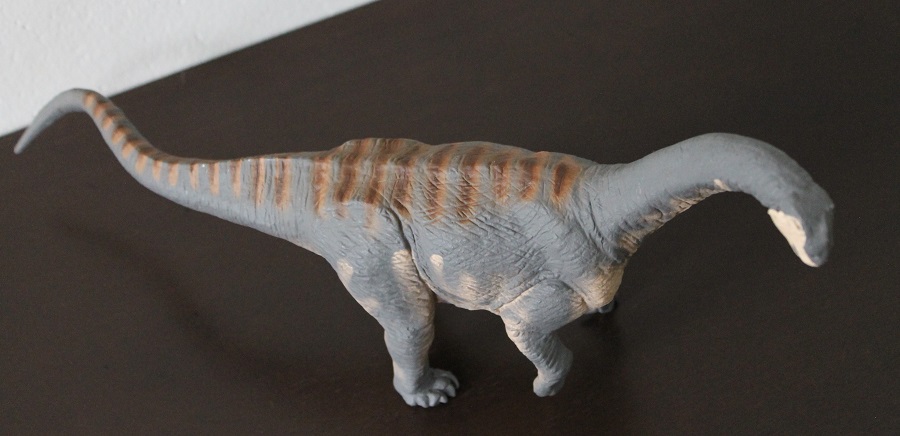
Camarasaurus was a bulky, stout sauropod. Even if it wasn’t as ugly in life as we once assumed it was it’s still a far cry from the graceful form of something like Diplodocus. This model depicts a burly, well-built animal that was no doubt capable of throwing its weight around. It stands solidly on three thickly muscled limbs while the right forearm is lifted off the ground. The anatomy of the feet and manus is in keeping with what we know about sauropod limb anatomy and this may be the first mass market Camarasaurus model to implement this. The forelimbs are crescent shaped and encased in flesh with only the imposing thumb claw exposed, jutting out from the manus like a rooster’s spurs. The hind limbs possess three claws on each with the rest of the digits reduced and barely visible.
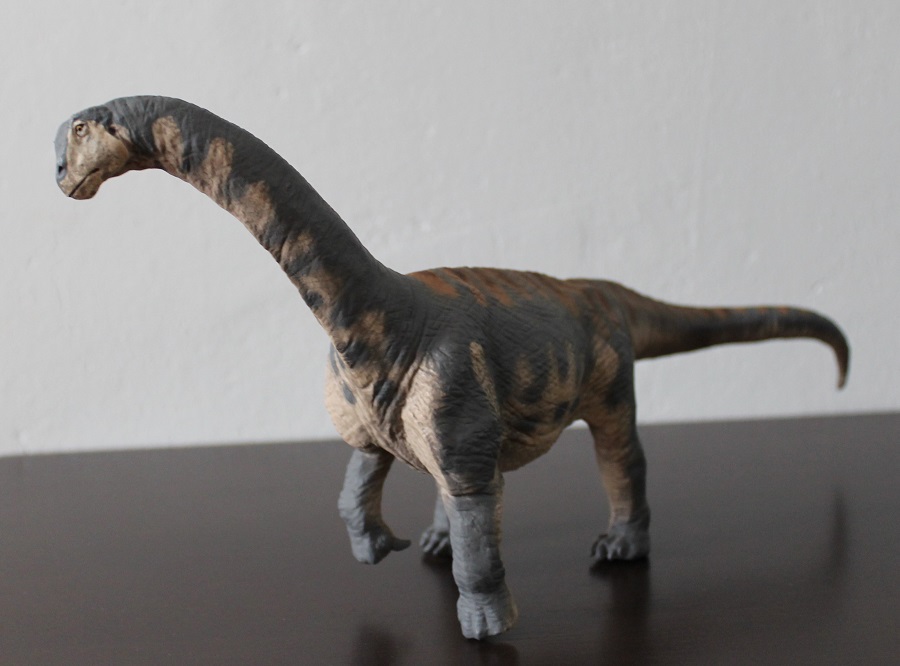
The torso on this beast is broad and rounded, and the base of its sweeping tail is thick and powerful. The neck is lifted high as was the proper posture of this sauropod, and the head is positioned slightly downward and towards the right, looking in whatever direction the animal appears to be going. Details such as the underlying musculature and loose skin along the flanks all add authenticity and realism to the figure. Camarasaurus had large shoulder blades placed high on the body which is properly depicted here as well.
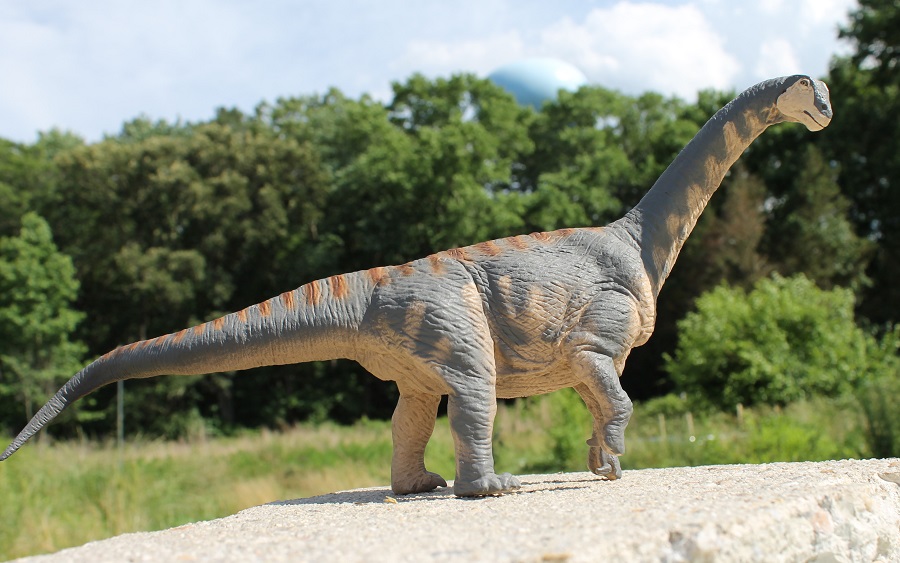
The color choices are subtle and soft, and pleasant to look at. Most of the model is painted gray but the underside and face are a creamy color, with some gray spots present along the underside of the neck, brown stripes run down the back and tail. Although I like the colors and patterning that was chosen I’m not a fan of the application, and this is my only real issue with the model. The paint appears thickly applied, so much so that it obscures some small details such as the aforementioned beak.
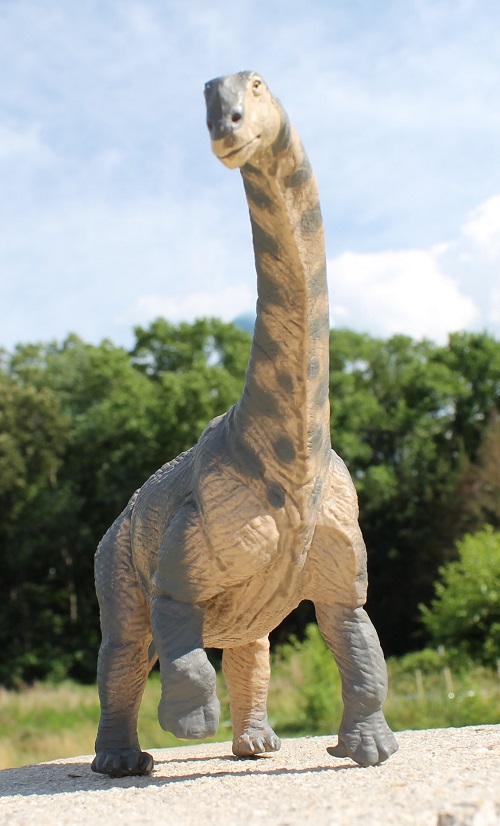
On my figure there is a sharp demarcation that’s evident on the head and neck. On the right side of my figure the cream colored parts of the head appear clean but on the left side it’s mixed in with the gray coloration, giving that side a dirty appearance that stands in stark contrast to the opposite side of the head. Safari’s paint application is often criticized poorly and unfortunately it’s well justified in this case.
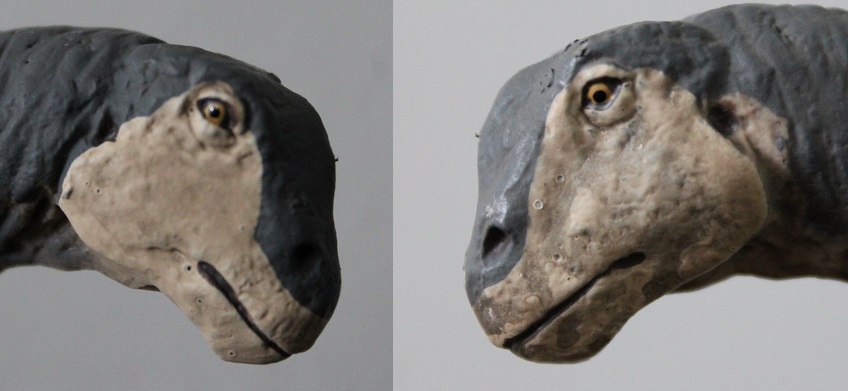
Despite some issues with the paint application I find the color choices, sculpt, and overall execution of this Camarasaurus fantastic and I rank it high amongst other Safari sauropods. For so long I was content with my Carnegie Camarasaurus, never really feeling the need for another one or realizing just how badly it needed an update, but then this one came along and I realized just how overdue it was. The Safari Camarasaurus is a must have, a masterful and modern rendition of a much neglected but significant animal. This quite possibly is the last great Camarasaurus we’ll get for the next 20 years, don’t pass it by.
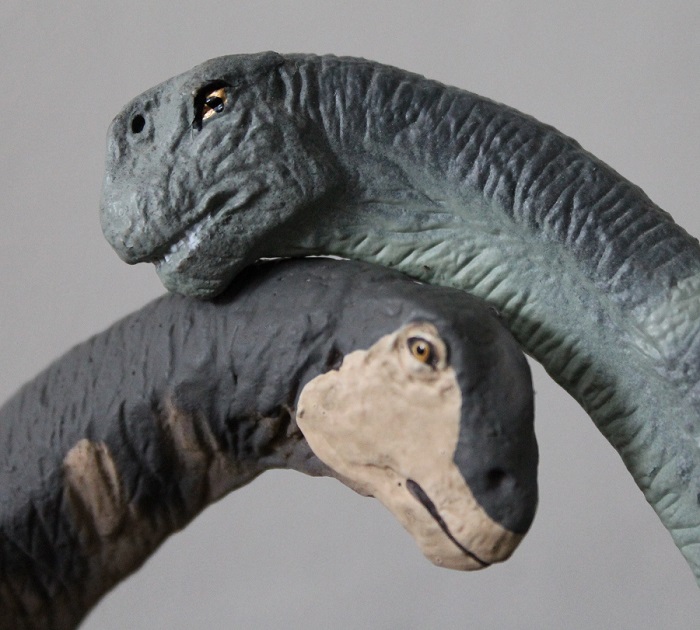
Disclaimer: links to Ebay and Amazon on the DinoToyBlog are affiliate links, so we make a small commission if you use them. Thanks for supporting us!




I own it. it is also amazing. I love it to!
So it doesn’t bother you that the head on this new Camarasaurus doesn’t resemble any known Camarasaurus find, but instead looks more like a steeper-sloped diplodocid or maybe a titanosaurid skull?
It’s kind of a reverse of what happened to Apatosaurus (when a museum mounted a Camarasaurus on an Apatosaurus skeleton so it would have a head).
Otherwise, neck down, a beautiful model.
What a lovely sauropod! Ugly, my foot!
Extensive review what you have done. What has been said is a very undervalued sauropod in the toy and collectibles market, and sincerely Doug Watson has represented it in a masterful way. Magnificent figure that updates his predecessor of the Carnegie brand that was already outdated. It is a beautiful figure.
An excellent review of an excellent model. When mine arrived, I liked it even more than I had on seeing the publicity photos.
This is a figure that always looks better in person. I was sent mine last Summer for the HowiSafari campaign and ended up feeling terrible about the fact that I couldn’t really get a lot of flattering footage/imagery of it. Thankfully a lot more justice has been done to this model in terms of the photos and videos available online, but it definitely still looks best in-hand.